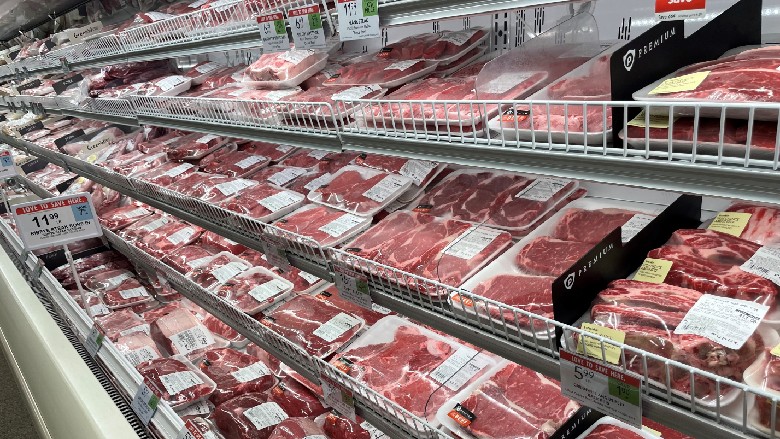According to FMI—The Food Industry Association and its study, The Power of Meat 2023, 98% of American households purchase meat and 74% deem meat and poultry as an essential part of a balanced diet. However, the meat shoppers in that study also weigh price as a leading factor in their purchasing decisions.
Brands need to manage effective pricing or shoppers will look for alternative ways to save money, like buying private-label brands, purchasing less meat or thinner cuts, which impact bottom lines. To stay on top of pricing, meat brands can leverage predictive analytics and insights powered by artificial intelligence to develop more accurate pricing forecasts.
Using tech to optimize pricing decisions
AI and predictive technology can help suppliers understand true, and rapidly changing, price elasticities for a product and get their arms around unpredictable swings in demand and pricing. Specifically, here are three ways meat producers can use AI to improve strategies and maintain profits:
- Set effective targets during annual business planning. In the meat category, the annual business planning process has recently focused on managing the volatility occurring in product costs, prices and stock levels, making it tough to set appropriate year-end revenue goals. AI can wade through the complexity, helping producers set proper pricing throughout the year to meet obtainable targets. The weighted influence of commodity pricing and supply chain disruptions will also be emphasized within their planning and goal-setting. AI-powered insights can work through specific challenges and recommend accurate year-end growth targets that suppliers can build pricing strategies around.
- Understand consumption trends. A major factor in how suppliers price products is reviewing one key metric: food consumption at home versus food consumption away from home. Prior to the pandemic, poultry producers, for example, prepared for more consumers eating away from the home, visiting restaurants or ordering out. Lockdowns and COVID-19 precautions dramatically shifted sales of chicken to the store. Since then, high prices and supply chain issues have the number swinging closer to pre-pandemic levels, but the trend is volatile. To be in the best position to predict how much chicken will be sold in stores and restaurants, poultry producers can ingest macroeconomic data into AI models and work alongside internal sales data, social listening metrics and other forms of external market data. The predictive technology then accurately recommends an informed strategy to start from, which includes effective pricing.
- Testing and identifying promotions. Suppliers using AI can test an endless number of scenarios around product promotions and pricing, ingesting billions of data points to make recommendations and script clear outcomes. A meat supplier can granularly identify a promotion by item and by store that will be most effective in moving products. For example, consider a brand not using AI, a poultry producer would be putting promotions on-shelf that were decided on by using recent historic trend data only. These static projections arm brands with data that might be wholly unrecognizable to the current landscape. If a promotion backfires, it could lead to wasted meat products and lost sales. AI delivers recommendations using forward-looking models and weighing potential shifts to come.
Looking to AI for pricing support
The meat category is challenged by its volatility, need to shift from a commodity-only model, supply chain centricity, and consumers’ desire for low prices. Shifts in weather, futures, commodities, agriculture and farming can swing the category daily. Throw in politics and large-scale events, and the category can shift further. Meat brands are challenged with developing an aligned pricing/production strategy and can lean on AI to help.
Running a business off static projections will not hold up to the volatile nature of the category. AI-powered insights and predictive analytics put meat and poultry producers in the best position to meet their annual business targets, set pricing that will help brands hit those targets and serve up pricing that keeps consumers happy and loyal to the category.





Report Abusive Comment